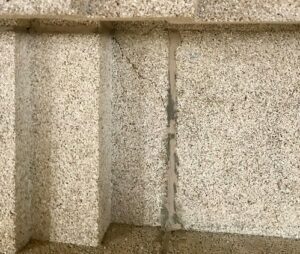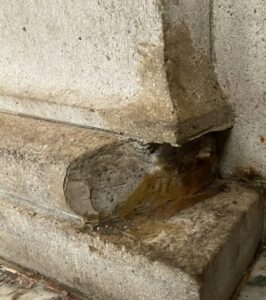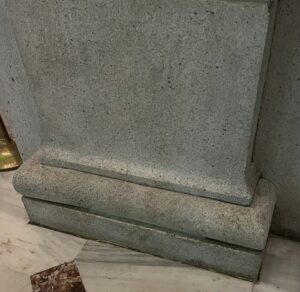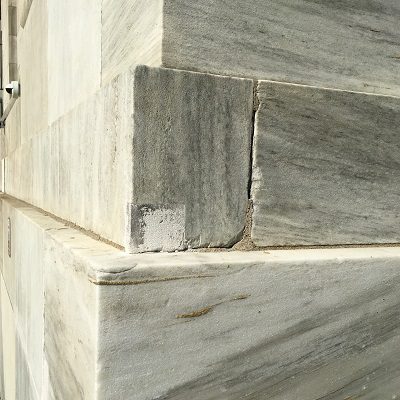Historic stone is a valuable part of our cultural heritage, and it is essential to preserve it for future generations. Cleaning historic stone requires care and attention to avoid damaging the stone’s historic integrity. In order to safely clean historic stone without harming its unique qualities, there are several steps that must be taken.
Identify the stone
Identifying the type of stone is an essential first step in the cleaning process, as different types of stone require different cleaning methods. For example, limestone and marble are sensitive to acidic cleaning agents, which can cause etching and discoloration. On the other hand, granite and sandstone are more durable and can withstand more aggressive cleaning methods. To identify the type of stone, you can consult a professional stone cleaner, a conservation expert, or a local historical society. Once you have identified the type of stone, you can select the appropriate cleaning method to ensure the stone is cleaned safely and effectively without damaging its unique qualities.
Marble at Harvard University (left) and sphinxstone at Mellon Auditorium (right) require different cleaning methods.
Assess the condition of the stone
Before cleaning historic stone, it is crucial to assess the condition of the stone and note particular conditions such as mineral staining or efflorescence, as each will require a unique cleaning method. This will help you determine the appropriate cleaning method to use. If the stone is in good condition, you may only need to clean it with water and a soft brush. However, if the stone is heavily soiled, you may need to use a more aggressive cleaning method. Etching, a condition in which the stone becomes dull or discolored, can occur naturally due to exposure to acidic substances (such as pollutants or rainwater) will require a specific cleaning method using a mild solution and physical abrasion. The stone may also be damaged and need to be repaired as part of the restoration process. Often, it may be necessary to repair the stone before beginning the cleaning process. Once such condition is sugaring, which is an instance where the stone’s surface is eroded, creating a “sugary” appearance and causes the stone to become brittle and break off or crumble. If the stone cannot be sourced or sourcing the correct stone to repair missing or damaged areas is too expensive, it may be possible for our expert craftspeople to replicate the stone in another material to simulate the appearance of the true stone. This can be done through faux stone painting techniques such as scagliola or marbleizing.
Stone dutchman repair completed then cleaned at Washington Union Station.
Test the cleaning method
Always test the cleaning method on a small, inconspicuous area of the stone before cleaning the entire surface. This will help you determine if the cleaning method is safe for the stone and if it will produce the desired results.


Cleaning test patch on travertine at the Massachusetts Institute of Technology.
Use a gentle cleaning method
Use a gentle cleaning method: When cleaning historic stone, it is important to use a gentle cleaning method to avoid damaging the stone’s surface. Avoid using harsh chemicals or abrasive materials that can scratch or etch the stone. Instead, use a mild detergent or a specialized stone cleaning product that is safe for historic stone. This step can also include the use of a brush to gently release and remove dirt and grime from the surface of historic stone. Latex can also be used as a low-impact, highly effective method to clean stone surfaces. The latex cleaner is applied then peeled away from the stone, taking with it even the heaviest of dirt, soot, and grime from the surface. Regardless of the final chosen method, each should be tested and determined to be the gentlest yet effective method for cleaning that particular type of stone.
Stone statue cleaning in progress using a sponge at St. Patrick’s Parish (left) and latex stone cleaning (right).
Avoid high-pressure cleaning
High-pressure cleaning can be effective for removing dirt and grime from stone surfaces, but it can also damage the historic stone. The high pressure can cause cracks and chips in the stone, which can lead to irreversible damage. Instead, use a low-pressure cleaning method, such as a gentle water wash or a soft-bristle brush.
Rinse thoroughly
After cleaning the stone, be sure to rinse it thoroughly with water to remove any cleaning residue. Residual cleaning agents can damage the stone’s surface over time, so it is important to remove all traces of the cleaning agent.
Dry the stone
After rinsing, use a clean, dry cloth to dry the stone thoroughly. Water can penetrate the stone’s surface and cause damage, so it is essential to dry the stone completely.
Consider hiring a professional
If you are unsure about how to clean historic stone or if the stone is particularly delicate or valuable, consider hiring a professional. A professional stone cleaner will have the expertise and equipment necessary to clean historic stone safely and effectively.
Cleaning historic stone requires care and attention to detail to avoid damaging the stone’s historic integrity. Always assess the condition of the stone and test the cleaning method before cleaning the entire surface. Use a gentle cleaning method, avoid high-pressure cleaning, and rinse and dry the stone thoroughly. If you are unsure about how to clean historic stone, do not hesitate to reach out to an experienced professional. John Canning & Co. has over 45 years of experience in restoring historic stone. For assistance with a historic stone restoration project, request a consultation to be connected with one of our knowledgeable experts who can guide you in the right direction.


















